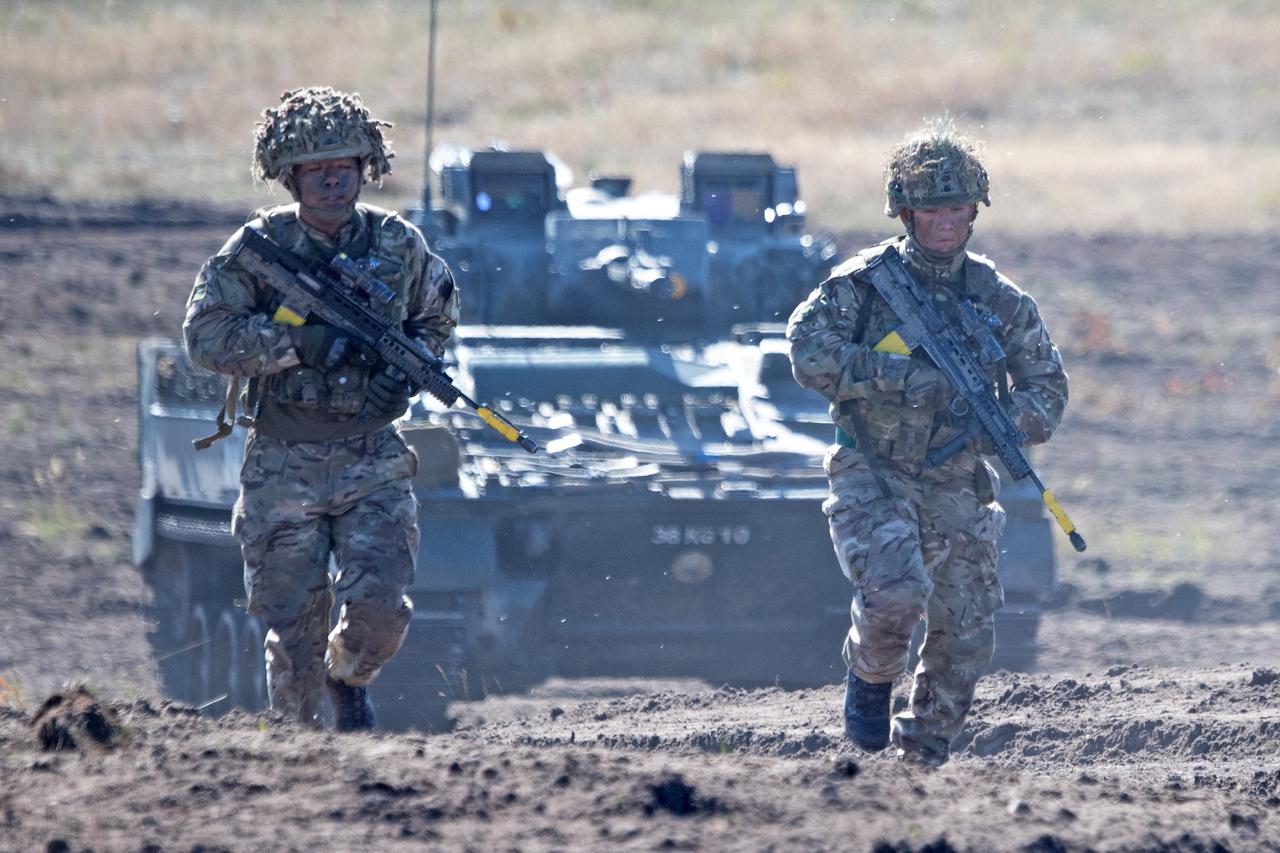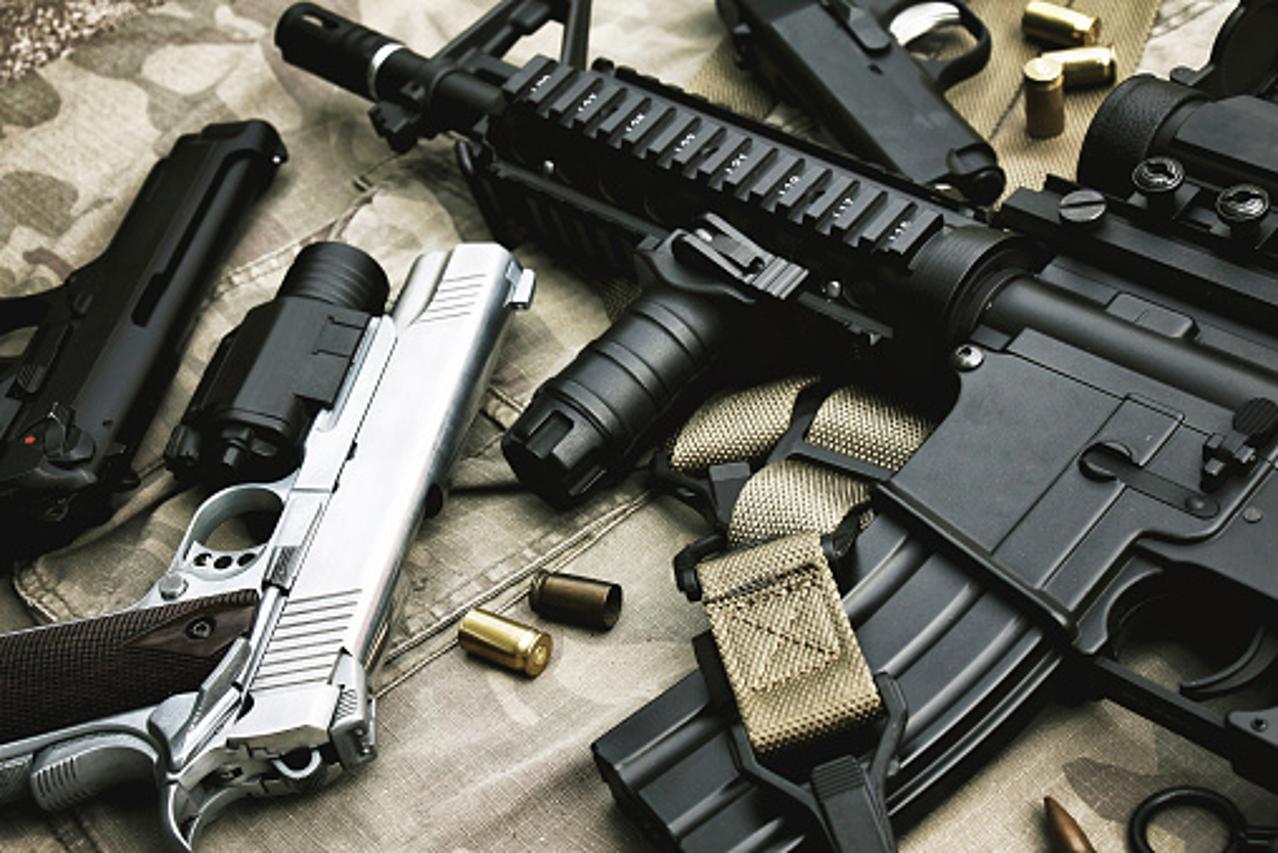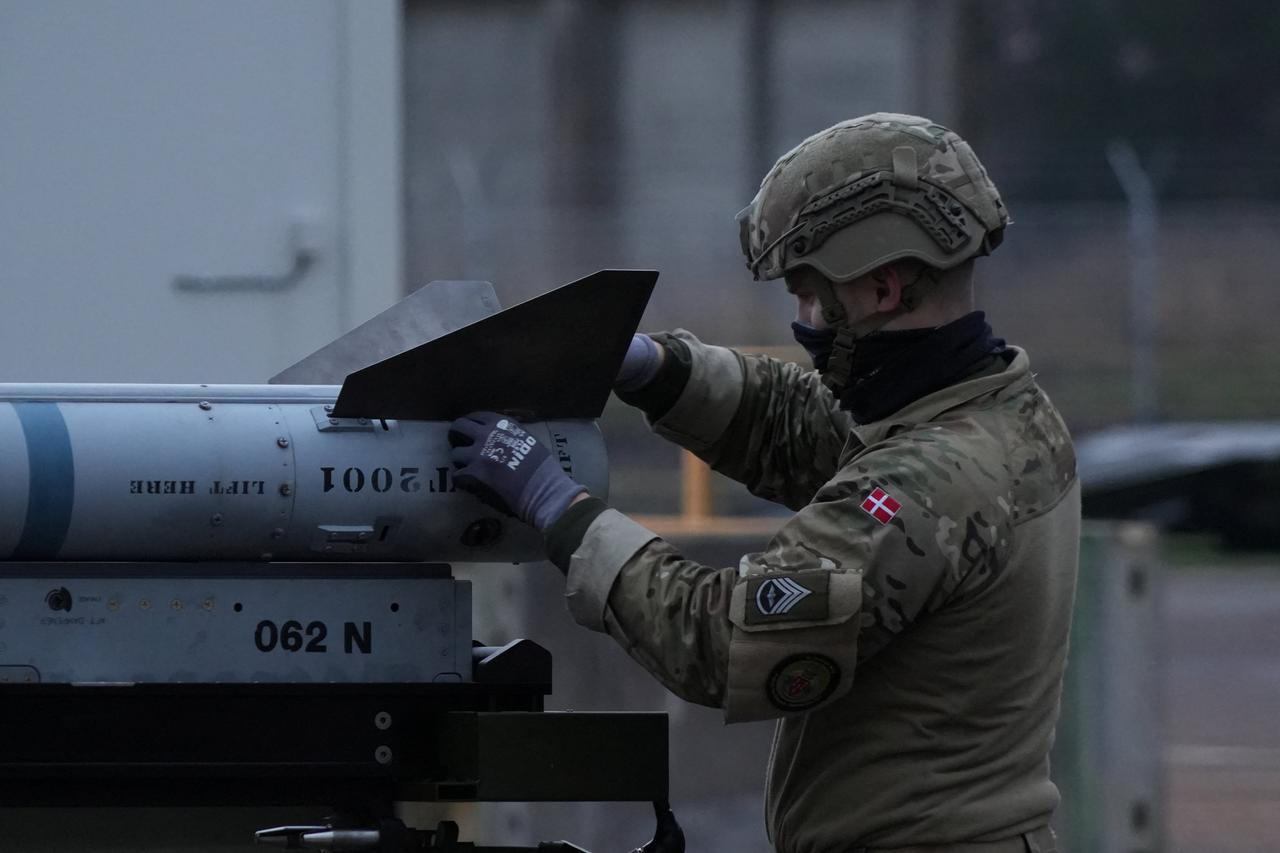What can be assumed with certainty is that in tomorrow’s world, in 2068, in half a century, there will still be weapons and wars throughout the world. Since the inception of humankind, creating and designing weapons and continuously waging wars have been fundamental features of human nature. There is and has almost never been a civilisation or a culture in which human nature has not proved itself in this respect. Weapons will continue being developed also because armament manufacturing or defence industry is among financially the most cost effective industries and it is still the main technological driver of all the other industries. It can already be assumed that weapons will continue with their exponential development.
Nevertheless, according to a large number of scientists humans will prove as a limiting factor in this race. It appears that at one point humans will no longer be capable of following or monitoring the development of, for example, artificial intelligence (AI) in military systems. This statement resulted in resistance by scientists who consider such statements as science fiction (SF). The former group of scientists believes that killer robots will be able to make decisions in battle and they also draw false conclusions that drones are already doing that. Those who are more realistic warn that killer robots are merely automatons, not "terminators", since they do not have any cognitive functions, but, on the contrary, thousands of scientists around the world are only striving to teach them how human brain works and makes decisions.
Science currently makes progress at such a pace that it takes only 2 years to achieve what previously used to be achieved over a period of 40 or 50 years. Consequently, comparing the developments concerning weapons and wars over the last 50 years cannot be repeated in the event of a prediction concerning the forthcoming 50 years. Nevertheless, it has to be highlighted that among weapons that were manufactured before 1968, i.e. 50 years ago, only some cannons, armoured fighting vehicles and Kalashnikov rifles are currently still in use. The professor at the Faculty of Electrical Engineering and Computing, Krešimir Ćosić, remembers one of his sojourns in the US, some thirty years ago, when his colleagues stated that it would never be possible to make a chip whose speed exceeds 10 or 20 MHz. Chips currently operate at speeds of several GHz. In addition, several billion transistors are currently crammed into a chip. Scientific progress will certainly exert a crucial influence on future wars, yet there will also always be human factors. For example, on that fatal date on 11th September 2001, the day of the attack on the twin towers of New York City’s World Trade Center and the US, Americans were involved in a large-scale military simulation as a form of prevention and opposition to a Russian attack.
The attack was simulated in Alaska and the real attack above the US happened on the same day. Hence, our prediction ability is very limited. Most armies still think in clichés based on the past wars and so the Croatian army is currently striving to think outside the box of what happened during the Croatian War of Independence. These are some of the impartial constraints even in terms of predictions of future wars.
Some constructs in military logic will remain unchanged. Hence, for example, there will still be brigades, yet we are increasingly dealing with the formation of smaller, adaptive specialised military forces. On the other hand, wars will be occurring on other and entirely different fronts. To simplify, tomorrow's and even some today's wars can be waged without warfare in the classical sense. For example, imposing one's opinions in the sense - I want you to think what I want you to think. That can currently be achieved even without a war.
We are talking about strategic communication and attitude management, causing social unrest and wars through investment and stock markets. In this way almost all the goals can be achieved, while in the past that was possible only through war. We could predict that world’s major players will continue achieving their goals and they will manage to do that even without a classic warfare, while smaller and weaker ones will probably continue attacking countries like Yemen and Syria.
Large forces will still need to retain the form of classic warfare for a simple reason that they still strive to sell their weapons and the constituent part of that is the testing of effectiveness of weapons in conditions of real warfare, rather than in the laboratory. If we start wondering where future wars will be waged, another question arises – which and what kind of wars, local or global? If we know that wars that were waged after World War II broke out both because of interests and the requirements of multinational companies, a conclusion can be reached that such interests will continue being pursued in this way also in the future.
We can predict that those who will be interested in achieving their goals in this region, will do so using both their influence and capital. Hence, Russia and the US will also continue doing that. We can hope that in order to achieve their goals they will rely exclusively on the use of capital, rather than weapons. Concerning robots, they increasingly appear as players on the battlefield and consequently they are considered as a dream come true for any army. What started off as smart patrol using drones is currently already used as a deadly weapon. Knowing the arrangement of one’s own and the opponent’s military forces on the battlefield currently appears crucial, yet in 50 years’ time this will not be sufficient. Entering the soldiers’ "heads" will be a new imperative.
For example, the American multinational corporation Northrop Gruman has been working on a system intended to detect the actions and thoughts of pilots in any moment. The project was launched after the disaster that occurred in 2015 in which Germanwings co-pilot Andreas Lubitz deliberately crashed a passenger aircraft into a mountain, killing 150 people. Hence, a conclusion was reached that pilot selections were not sufficient and that they needed monitoring and their heads had to be "entered into". This means that humans and human brain, human mind and behaviour remain the biggest mysteries in the future.
This is the primary question upon development of artificial intelligence, addressed by a large number of neuroscientists. In order to work on cognitive intelligence with artificial intelligence, we need to, first of all, fully unveil the mystery of this type of intelligence within the human brain. The most influential countries in the world have been opening a new scientific front in this field, since revealing this magic of human brain is of primary importance. Many scientists are faced with a problem concerning this issue, since science and technology grow exponentially and they are hence thinking about whether human brain will be able to adapt to such technological growth after all.
The professor Ćosić confirms that the debate on whether artificial intelligence will be in charge of decision-making in the future or whether this role will still be assigned to humans is still held at scientific symposiums. According to him, people who are fond of speculation also tend to say that artificial intelligence will rule the world in the future. These doubts about the power of the human brain and about the possibilities of copying the cognitive abilities of the human brain have been pondered upon at the speculative level perhaps for as many as 50-odd years.
Nevertheless, one needs to become aware of the fact that the period of 50 years during which humans have been treading the path towards the creation of artificial intelligence is insignificant compared with hundreds of millions of years of human brain development. The human brain is certainly the most complex thing in the world and hence a conclusion can be reached that we will never be able to create an artificial brain that will outperform the human brain from the cognitive aspect. Artificial intelligence will continue its vigorous development in terms of mass data processing, as well as data analysis and some predictions, but humans will always be and remain in charge as the "masters". The continuous search for ways in which to control the human brain and hence influence also the control and management of large- scale systems and indirectly with artificial intelligence is another matter. According to a large number of people this is bordering on science fiction, but scientists like Ćosić and his students do not share this point of view. It has to be pointed out that this type of research resulted in the development of smart pilot helmets.
However, it is a well-known fact that science is always a huge step ahead of practical application. From the practical aspect, one needs to follow the work of DARPA (Defence Advanced Research Projects Agency), the agency of the U.S. Department of Defence, which is in charge of the development of new technologies. It has to be pointed out that this company developed the computer network ARPANET, which, after at least around 15 years of exclusive application for military and top secret purposes was transformed into the current divinity – the Internet. DARPA developed GPS in an identical way and started with development of artificial intelligence (AI). What DARPA is currently doing concerning the development of artificial intelligence, the world is certainly not aware of, primarily due to the fact that its application in the military and subsequently in the civil sector will be known to us perhaps 10 to 15 years later. Hence, if we say that the world's top universities are currently intensively dealing with segments of development of artificial intelligence, virtual reality and automatic identification of goals and microsatellites, we can only imagine the extent to which DARPA is already ahead of these "civil" research projects.
Consequently, it would be pleasant and comforting if we could with a probability of 100% believe in the estimates claiming that smart computers and artificial intelligence will never be in the position to take over the decision-making on war battlefields. Never without consulting their makers - humans. Scientists that claim to be realists still claim that the human brain is too complex to be "copy-pasted" onto chips, as nature has been working on it for billions of years, since prehistoric times. When all the strengths and weaknesses of humans and their brain are added, primarily its unpredictability and the potential for improvisation, the question arises whether neuroscience will ever be able to grasp the full potential of the most complex organ in the world. Hence, the first premise would then probably be that scientists need to "teach" chips to function like the human brain. Nevertheless, even if we can believe in this optimistic scenario, the fact remains that large forces will be determining the pace of technological progress and applying it on the battlefield. During this progress the interaction between human and artificial intelligence will be increasing. Consequently, it can be predicted that human cognitive abilities, as well as human intuition will in this way be upgraded through co-operation with artificial intelligence. Nevertheless, humans will still be in charge of developing algorithms and methods for artificial intelligence. Irrespective of Sci-Fi movies, today’s pilotless aircraft, even those with combat systems, are only mechatronic machines, robots, notwithstanding their huge potential to hear and see everything. Robots have what humans used to have, say, several tens of millions years ago, hence, the basic functions in the sense that they can see, hear and perceive and who at the time already had an "algorithm" that enabled them to survive. It has to be highlighted that the creation of the cognitive human brain is still considered as the pinnacle of natural evolution. Hence, if we are optimistic, we will conclude that there is and there will be no wars without humans.
What else can be predicted? We can predict the survival of the classic thesis according to which war is the continuation of politics by other means and it will still remain the long arm of politics. In addition, it can be predicted that we will still be witnessing the continuation of stratification of the world into the most powerful, the wealthiest, the most sophisticated and those who will always be striving to maximise their objectives as opposed to those who will always be lagging behind in all these aspects, those who will be subordinate and always faced with threats of war. As far as Croatia is concerned, its further reliance on the most powerful international partners, i.e. the US, will prove reasonable, against the backdrop of the Croatian population figures, as well as its scientific and economic possibilities. Concerning military dominance and protection, Croatia is integrated into NATO along with around thirty other countries around the world. It is likely that in the forthcoming years and decades, its decision to remain in this alliance and under this umbrella will prove most meaningful. This Croatian position could be jeopardised only in the event of the disintegration of the alliance or the US. If there are doubts concerning whether artificial intelligence will take over decision-making during wars, there are no such doubts concerning the technological development of new weapon systems in the forthcoming decades. It has to be pointed out that new weapons that have already been developed will be used in 10 to 20 years.
An increasing number of hundreds of billions of dollars are used in the development of new weapon systems. The question arises which and how many countries will be capable of purchasing new weapons in the future, since weapons are becoming increasingly expensive and hence those countries that are not wealthy will not be able to afford them. The US has been the leading force in weapon development and since World War II it has developed increasingly modern systems on a regular basis, every decade, primarily aircraft and navy weapons, as well as military rockets. Towards the end of the 1980’s the US started with the development of the currently famous F-22 "stealth" fighter aircraft. Today, almost 30 later, the F-22 is the stealthiest and the most sophisticated aircraft of the US army. Following the decision of the Congress, it is included in the list of technology whose export is banned. Nevertheless, only 187 aircraft F-22 have been built. According to projections for the future, the US was planning to replace its F-15 with F-22 Raptors, yet the number of F-15 is still double compared with Raptors. It has to be pointed out that 50-odd F-22 Raptors are intended exclusively for pilot training. They turned out considerably more expensive, as the price per aircraft reached from 140 million to 150 million dollars.
The development of new military technologies requires an increasing amount of time, they are increasingly expensive and inaccessible. Moreover, the requirement for system modernisation is permanent and it never ends. Software development is continuous, as well as work on debugging, since there is a large number of bugs. The best example of this is the development of another highly sophisticated aircraft that is already starting to be used, the American F-35. This technology has become highly complex. These new weapons abound with different constraints that become visible only after they have been used, especially after their use in conditions of real warfare. F-35 was designed as an unparalleled war machine that continuously diagnoses its status, while connecting to the central computer that the Americans called ALIS (Autonomics Logistics Information System), which could be considered only a step below artificial intelligence. The ALIS database includes data about every F-35 that has been manufactured and it monitors the status of each device. In other words – how many hours of flight it has had, what weapons have been used, how much it has fired, whether there are any parts that need replacement and when that needs to be performed, while the system automatically orders spare parts from the manufacturer. The downside is that the system is highly complex and it does not always operate optimally. Bugs sometimes cause the system to order three identical parts at once and there are problems also in practical application.
Should the need arise for sending 50 US aircraft to some focal point in the world, in case of transport of F-16 or F-15 aircraft, they needed in-flight refuelling only several times. The aircraft landed, for instance, in Kuwait, the pilots stopped for a short lunch break and after that they were able to launch a military operation. In the event of the sophisticated F-35, after it is transported to another continent, the entire terminal with ALIS needs to be transported with it and it needs to be prepared for and adapted to meet the requirements of the specific military operation. This customisation of F-35 normally lasts three to four days. Hence, "the smart aircraft" is not instantly prepared for battle. Notwithstanding these shortcomings, F-35 is considered as the most powerful fighter jet in the air compared with the previous generations of aircraft. However, sceptics are still striving to confirm that in warfare. Perhaps that is the reason why the US delivered several tens of F-35 to Israel "cutting in line" and hence the military media concluded that the Israeli had already tested F-35 fighter jets in combat above Syria.
Conjectures appeared simultaneously about one F-35 being hit. Israel has certainly never confirmed any of the previously mentioned information. Nevertheless, it is interesting that the Americans have yet again allowed the Israelites to without delay perform the customisation and modernisation of the most cutting-edge aircraft that had been delivered to them, as had been the case with F-16. Moreover, the Israel’s F-35 are beyond ALIS diagnostics. Israel has its own solution concerning this issue. The Americans have apparently made a compromise here and have conceded a considerable proportion of the "sovereignty" over F-35 fighter jets to the Israelites in order to gain important insights into the actual use value of F-35 in conditions of real warfare. Consequently, it is still believed, and this will continue also in the forthcoming decades, that the actual power and potential of new weapons can best be tested in warfare. This fact makes it clear that occasional outbreaks of war will remain imperative and in the interest of the major forces. The weapons that are currently being developed and planned are undoubtedly powerful on paper and have fascinating capacity, which becomes obvious when news is published about testing of hyper-speed rockets that reach speeds from Mach 8 to 10. Such information reaches the public in cycles, once from Russia, to the US and China. The Russians are very pragmatic in development of new weapons and they needed to be more economical compared with the Americans.
Consequently, the Russians persisted in the development of antiaircraft rocket systems in which they realistically still hold the supremacy. Furthermore, their fourth generation aircraft (e.g. Su-35) has reached maximum upgrade levels, which was costly, since the prices of such aircraft officially currently reach from 70 million to 80 million dollars per aircraft and actually even exceed these figures. Russia has hence manufactured only several dozen such aircraft. On the other hand, the Chinese are actually investing substantial efforts into their "copy & paste" strategy. This is evident in the example of its J-15 naval aircraft, which is actually an unlicensed copy of the Russian Su- 33 carrier jet. Due to the fact that upon copying the Chinese had managed to purchase only one Su-33 prototype, from Ukraine, several J-15 aircrafts have already crashed. They proved unreliable, since some of the components and also the engines were unsatisfactory, which was probably the consequence of the fact that the Chinese did not have the original blueprint nor the required experience in manufacturing of some of the crucial components. It is estimated that the Chinese are about to face serious problems concerning the maintenance of such aircraft and they have allegedly been developing new ones.
For the enthusiasts of classics, here is one more story that has recently happened in the US. At the Nevada-based military training ground, during the daytime under ideal conditions new F-35 fighter jets and the good old A-10 Thunderbolt II were assigned an identical task, to destroy a convoy of vehicles using cannon and bombs. The American army is very fond of A-10 aircraft, whose pilot after the first fly over, already upon the second fly by, resorts to accurate destruction of the enemy located under 100 meters from own forces. F-35 cannot do that due to its tardiness in the air and lower manoeuvre capability. It is also considerably more vulnerable, since it is not armoured. A-10 has titanium "bathtub" armour intended to protect the pilot, the engines and the fuel tank. Advocates of F-35 still believe in the supremacy of this type of fifth generation fighter aircraft even after the practical "defeat" in Nevada, as it is not intended for close combat. It is actually intended for stealth attacks of the enemy from great distances. Concerning the future, F-35 developers believe that it is the last American manned aircraft.
Hence, the next, sixth generation of the US fighter jets is expected to be unmanned. Questions such as "who will be controlling and flying it and where from" arise from this option. In case this is performed by human operators on the ground, how to protect, for example, satellite connections. Will the operators lag behind? Will in this case pilots need to be replaced by artificial intelligence in terms of target selection, reactions and decision-making? Will artificial intelligence have at its disposal a sufficient number of predetermined algorithms and will that be sufficient to oppose manned enemy aircraft? In case that is possible in the future, in what way will countries and militaries tackle ethical issues? Is it acceptable to allow a machine to make life and death decisions?
This situation is unpredictable since, if F-35 fighter jets face problems with bugs, what problems will be faced throughout the development of the sixth generation fighter jets? It can certainly be assumed that the US will continue pursuing its Holy Grail in terms of military issues, which is the establishment of an increasingly complex global monitoring system. That simultaneously implies that it will be implementing it from a new domain – from the outer space. This is currently not allowed because of the agreement with Russia, yet we can actually imagine the transfer of new weapon systems into the outer space, i.e. electromagnetic rail guns or lasers and even military rockets. The technology would at that point enable accurate hitting of targets on Earth from distances of several hundreds of kilometres in the outer space. The military would find that solution particularly interesting, since these weapons currently appear indefensible.
Considering the fact that we are actually witnessing that politics is calling into question the sustainability of the global Treaty on the Non-Proliferation of Nuclear Weapons, it is conceivable that in the forthcoming future the Outer Space Treaty, which bars states from placing weapons of mass destruction in Earth orbit, can also be called into question. The Strategic Defence Initiative, also known as Star Wars, as planned by the American president Ronald Regan, caused the collapse of the Soviet Union that was not able to keep abreast with the US in this arms race due to its financial aspect. Nevertheless, in the future that is conceivable and possible. After all, military experts are currently claiming that weapons have already been placed in the outer space. The latter was in a way formalised by Russia, through the merger of the Russian Air Force and the Russian Aerospace Defence Forces into "the Russian Aerospace Forces". Moreover, the US has also established the fifth army branch– the United States Space Force.
Nevertheless, science and technology are not omnipotent concerning these issues. This has been best shown through the example of Afghanistan. In this country the US forces are using currently the most sophisticated weapons – yet they cannot establish government control beyond the several kilometre wide oases. The information on the whereabouts and the activities of the enemy does not provide much assistance.
In this case the human genome convincingly outperforms the "artificial" intelligence of the US army. Is there any "hope" that it will be superior to it in the future?
In the speculations concerning the potential for warfare in the future, it appears that the most important limiting factor will be affordability.
Against the backdrop of exponential growth of the prices of weapons and if we can assume that, for example, an aircraft whose current price reaches 100 million dollars, in 20 years’ time its price will increase five or tenfold, the question arises, who will be able to afford the purchase of such weapons after all.
The same applies to other weapons; the price of a guided-missile destroyer that used to be 100 million dollars, currently stands at 1 billion dollars, while the price of new generation of American Ford class aircraft carriers already reaches 13 billion dollars. The question remains whether there is any possibility for it to also be approached by an undetected widely-produced Russian Kilo-class diesel submarine, as was the case last summer when the American fleet was approached by one en route to Syria, on its way from Murmansk.
It has to be pointed out that last year Croatia purchased PzH 2000, which achieves 40 kilometre range using common grenades. The Germans have developed a grenade with a range up to 70 kilometres. Nevertheless, its price is 10 times higher. The price of RBS-15 missile system on our fast attack missile ship reaches around 1 million euros per piece and their range reaches up to 80 kilometres. However, if we were striving to purchase the cutting-edge version of this system with a range up to 300 kilometres, we would need to pay 3.5 million euros per rocket. Can you imagine the situation in 10 or 50 years’ time?
Should the development of new weapons continue pursuing this path, it is certain that only a smaller number of countries will be able to afford them, unless the potential of 3D printing is brought to perfection.
If we imagine an armed conflict in the future, it can be predicted that it will not depend to such a large extent on the number of soldiers killed and the territories conquered, but on which side was the first to go bankrupt as the result of the war.
If in the future the price of the sixth generation unmanned aircraft reaches, for example, 500 million dollars, those who will own it will certainly use it very restrictively, making sure they do not lose it. In addition, irrespective of high prices, this aircraft will hardly be omnipotent and there will probably always be much more affordable weapons capable of destroying the expensive machines.
Consequently, it can be assumed that even in 50 years’ time there will be warfare, but it will be limited to more unfortunate and less powerful countries, probably in Africa and perhaps also in the Middle East. Should there even be sophisticated wars in the future that would involve the countries which are able to afford the most advanced weapons, it is certain that these wars will not be protracted, due to the financial aspect. It is possible that after the first salvo using the most expensive weapons, the military power of the belligerent parties could rapidly be reduced to, let’s inject some levity, a common Kalashnikov rifle and a common armoured fighting vehicle mentioned at the beginning of the story.
Pogledajte video - Igor Rudan o umjetnoj inteligenciji:











































 Otvori KEKS Pay
Otvori KEKS Pay

vrh!!! Više im se ne da ni prevoditi!!!!